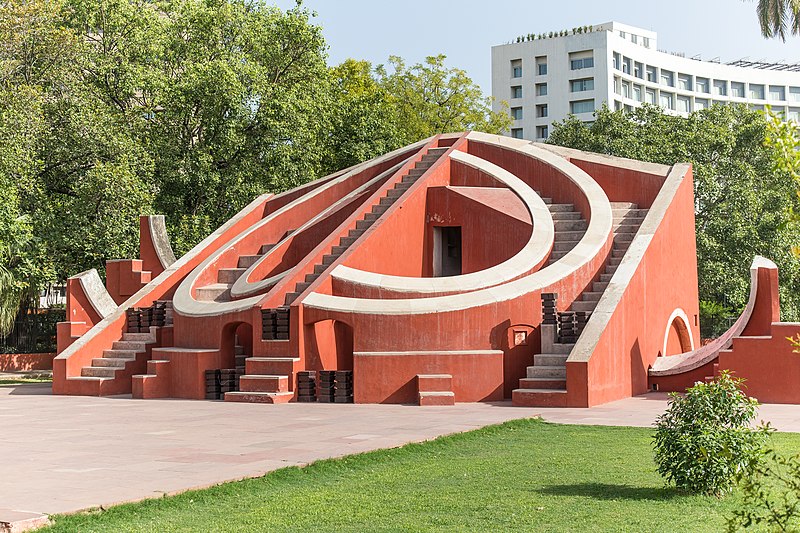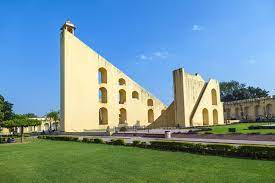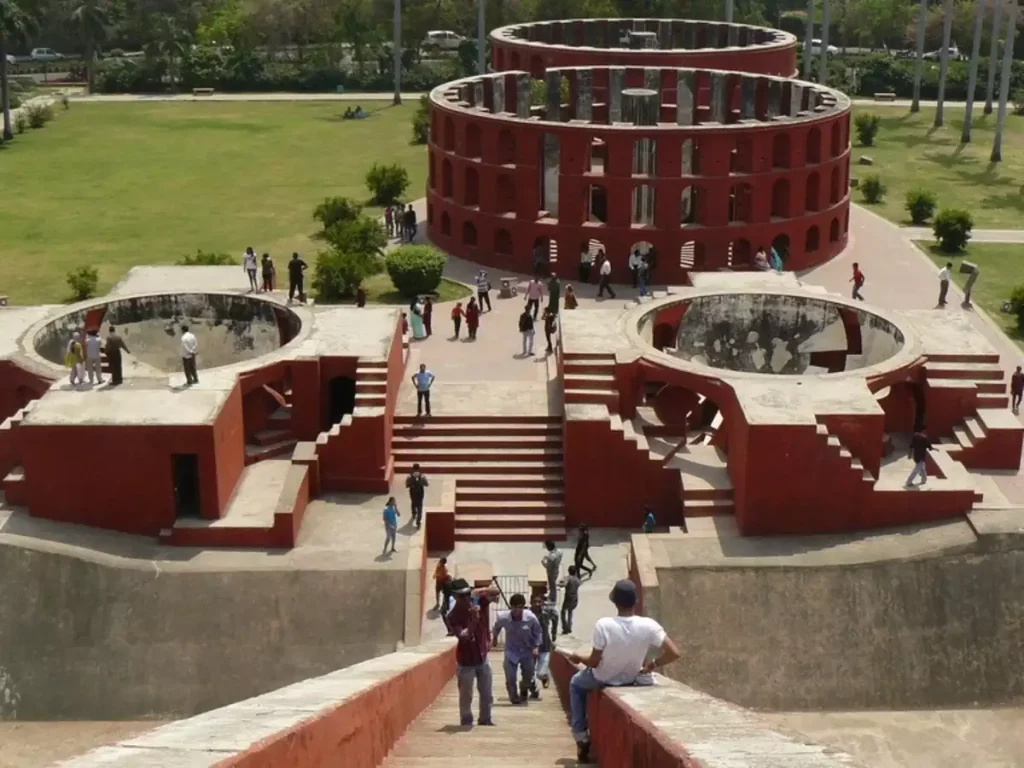Jantar Mantar
- Discover the fascinating history and significance of Jantar Mantar, an astronomical marvel built in the 18th century.
When it comes to historical landmarks that blend science with architecture, Jantar Mantar stands out as a unique marvel. This astronomical observatory is not only a testament to the scientific advancements of its time but also a fascinating glimpse into India’s rich cultural heritage. If you’ve ever wondered what Jantar Mantar is, where it is located, its historical significance, and its advantages, you’re in for a treat. In this comprehensive article, we’ll delve into the various aspects of Jantar Mantar, including its distance from the airport, and conclude with frequently asked questions to satisfy your curiosity. Let’s embark on this journey to uncover the secrets of Jantar Mantar!

What is Jantar Mantar?
Jantar Mantar is an astronomical observatory consisting of a collection of architectural instruments designed to measure time, predict eclipses, and track celestial bodies. Built in the early 18th century, Jantar Mantar was the brainchild of Maharaja Sawai Jai Singh II, a passionate astronomer and ruler of Jaipur. This fascinating site embodies the blend of scientific ingenuity and architectural brilliance.
The term “Jantar Mantar” is derived from Sanskrit, where “Jantar” means instrument and “Mantar” means formula or calculation. Together, the phrase signifies a place where calculations are made using instruments. These instruments, primarily built from stone and brass, are massive and meticulously designed to carry out various astronomical observations.
Where is Jantar Mantar?
You might be wondering, where exactly is Jantar Mantar? Well, there are five Jantar Mantar observatories in India, located in New Delhi, Jaipur, Ujjain, Mathura, and Varanasi. The most famous and largest of these is in Jaipur, Rajasthan. This Jaipur observatory is a UNESCO World Heritage site, attracting thousands of visitors every year. The Delhi Jantar Mantar, located in the heart of the capital city, is also a popular tourist destination.
Jantar Mantar in Jaipur
- Location: Near City Palace, Tripolia Bazaar, Jaipur, Rajasthan
- Timings: 9:00 AM to 4:30 PM
- Entry Fee: Nominal charges apply, with discounts for students and groups
Jantar Mantar in New Delhi
- Location: Parliament Street, Connaught Place, New Delhi
- Timings: 6:00 AM to 6:00 PM
- Entry Fee: Minimal entry fee, with concessions for students
History of Jantar Mantar
The history of Jantar Mantar is as captivating as the instruments themselves. Maharaja Sawai Jai Singh II, a keen astronomer, was inspired by his study of Islamic astronomy and the works of Mughal astronomer Ulugh Beg. Recognizing the need for accurate astronomical observations to improve calendars and astrology, he embarked on constructing Jantar Mantar in 1724.
The Jaipur Connection
Jaipur’s Jantar Mantar, completed in 1734, is the largest and best-preserved of the five observatories. It boasts 19 main instruments, including the world’s largest stone sundial, the Samrat Yantra. These instruments were designed to measure time with remarkable accuracy, track the positions of celestial bodies, and predict astronomical events like eclipses.
Expansion to Other Cities
Encouraged by the success of the Jaipur observatory, Maharaja Jai Singh II built four more observatories across India. Each site was strategically chosen to maximize observational capabilities. The Delhi Jantar Mantar, for instance, was positioned to serve the northern regions of India, while the Ujjain observatory catered to the central parts of the country.

Advantages of Jantar Mantar
So, what makes Jantar Mantar so special? Let’s explore the advantages of this historical observatory:
1. Accurate Timekeeping
The instruments at Jantar Mantar, particularly the Samrat Yantra, were designed to keep time with incredible precision. Before the advent of modern clocks, these instruments provided an accurate way to measure time, essential for daily activities and rituals.
2. Astronomical Observations
Jantar Mantar’s instruments allowed astronomers to track celestial bodies, study their movements, and predict events like solar and lunar eclipses. This capability was crucial for astrological calculations and calendar reforms.
3. Educational Value
Today, Jantar Mantar serves as an educational resource, offering insights into the scientific achievements of ancient India. It stands as a testament to the country’s rich history of astronomical knowledge and innovation.
4. Cultural Heritage
Jantar Mantar is not just an observatory; it’s a symbol of India’s cultural and scientific heritage. It attracts historians, tourists, and astronomy enthusiasts from around the world, fostering a deeper appreciation for India’s contributions to science.
Distance from Airport
If you’re planning a visit to Jantar Mantar, you might be curious about its proximity to major airports. Here’s a quick guide:
Jaipur Jantar Mantar
- Nearest Airport: Jaipur International Airport (JAI)
- Distance: Approximately 13 kilometers (8 miles)
- Travel Time: Around 30 minutes by car
Delhi Jantar Mantar
- Nearest Airport: Indira Gandhi International Airport (DEL)
- Distance: Approximately 15 kilometers (9 miles)
- Travel Time: Around 40 minutes by car

Conclusion
In conclusion, Jantar Mantar is more than just an architectural wonder; it’s a symbol of India’s rich astronomical heritage. Whether you’re an avid history buff, a science enthusiast, or a curious traveler, a visit to Jantar Mantar offers a fascinating glimpse into the past. From its precise instruments to its historical significance, Jantar Mantar continues to captivate and inspire.
So, next time you find yourself in Jaipur or New Delhi, don’t miss the opportunity to explore this astronomical marvel. With its unique blend of science and art, Jantar Mantar is a must-visit destination that bridges the gap between the ancient and modern worlds.
FAQs
What is Jantar Mantar?
Jantar Mantar is an astronomical observatory consisting of a collection of architectural instruments designed for precise timekeeping and celestial observations. Built in the 18th century by Maharaja Sawai Jai Singh II, it remains a symbol of India’s scientific heritage.
Where is Jantar Mantar located?
There are five Jantar Mantar observatories in India, with the most famous ones located in Jaipur, Rajasthan, and New Delhi. The Jaipur observatory is near City Palace, while the Delhi observatory is situated in Connaught Place.
Who built Jantar Mantar?
Maharaja Sawai Jai Singh II, a passionate astronomer and ruler of Jaipur, built Jantar Mantar in the early 18th century. His vision was to create precise instruments for astronomical observations and timekeeping.
What are the main instruments at Jantar Mantar?
Some of the main instruments at Jantar Mantar include the Samrat Yantra (the world’s largest stone sundial), Jai Prakash Yantra, Ram Yantra, and Misra Yantra. Each instrument serves a specific purpose in astronomical observations.
How accurate are the instruments at Jantar Mantar?
The instruments at Jantar Mantar are remarkably accurate, especially considering their construction in the 18th century. The Samrat Yantra, for instance, can measure time to within a fraction of a second.
Why is Jantar Mantar significant?
Jantar Mantar is significant for its historical and scientific value. It showcases India’s advanced knowledge of astronomy and serves as a testament to the country’s rich cultural heritage. Additionally, it remains a popular tourist attraction and educational resource.
How far is Jantar Mantar from the airport?
The Jaipur Jantar Mantar is approximately 13 kilometers from Jaipur International Airport, while the Delhi Jantar Mantar is around 15 kilometers from Indira Gandhi International Airport. Both observatories are easily accessible by car or taxi.
Discover the fascinating history and significance of Jantar Mantar, an astronomical marvel built in the 18th century. Learn about its precise instruments, locations, advantages, and proximity to major airports. Explore Jantar Mantar in Jaipur and Delhi, and uncover the secrets of India’s astronomical heritage.

